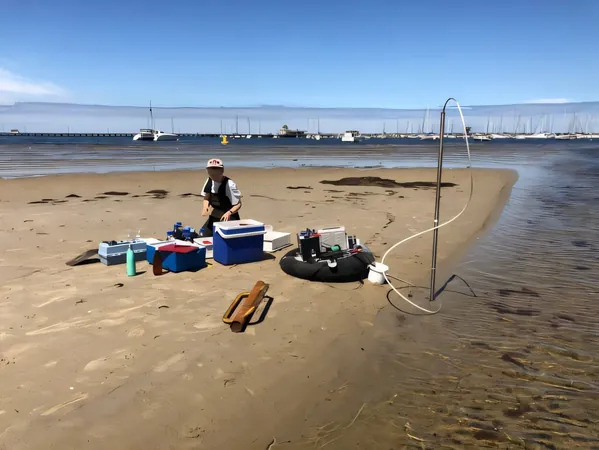
Shocking Discovery: Sandy Coastlines Are Hidden Methane Factories!
2025-09-01
Author: Wei Ling
A Game-Changing Study Unveils New Climate Insights
A groundbreaking study from Monash University has unveiled a startling truth about our coastal ecosystems that could change the way we view greenhouse gas emissions forever. Published in the prestigious journal Nature Geoscience, this research highlights how sandy coastlines, which cover half of the world’s continental margins, are significant yet overlooked contributors to methane emissions.
Rethinking Coastal Carbon Storage
According to lead researcher Professor Perran Cook, this discovery overturns a long-held belief that coastal vegetation primarily serves as a carbon sink. "This new finding not only challenges a fundamental assumption in marine science but also raises questions about the role of sandy coastline ecosystems in greenhouse gas production," he stated.
Methane: The Silent Threat
The study reveals that the decay of biomass, such as seaweed, releases methane, a potent greenhouse gas that may negate much of the carbon dioxide removal attributed to these coastal ecosystems. Understanding how much of this naturally occurring methane emissions are produced in coastal areas is crucial for refining the climate models that guide our actions against climate change.
New Microbial Villains Identified
In an eye-opening detail, researchers discovered two new strains of methanogens—microbes responsible for methane production—across various sites in Victoria’s Port Phillip Bay and Westernport Bay, as well as in Denmark. Contrary to previous beliefs that these microbes could not survive in oxygen-rich environments, the study shows they can rapidly recover and produce methane even after exposure to oxygen.
The Algal Bloom Connection
Professor Cook warns that increasing occurrences of algal blooms—like those that hit parts of coastal South Australia in 2025—could significantly enhance methane emissions when seaweed debris washes ashore. He noted that with rising sea temperatures, invasive species, and escalating nutrient pollution, we’re witnessing more frequent algal blooms that could lead to dramatic surges in methane emissions.
Looking Ahead: More Research Needed
Ning Hall, a Ph.D. candidate at Monash and the study's first author, emphasized the need for further research. "Our future studies will focus on how various types of seaweed and oceanic conditions affect these methane-producing microbes, enabling us to better predict methane emissions in coastal zones," Hall remarked.
The Ecosystem's Double-Edged Sword
This new research not only calls into question our understanding of coastal biomass but also emphasizes the complex role these ecosystems play in climate dynamics. As we delve deeper into this area, we might just uncover more about our intricate relationship with these coastal wonders—and their unseen dangers.




 Brasil (PT)
Brasil (PT)
 Canada (EN)
Canada (EN)
 Chile (ES)
Chile (ES)
 Česko (CS)
Česko (CS)
 대한민국 (KO)
대한민국 (KO)
 España (ES)
España (ES)
 France (FR)
France (FR)
 Hong Kong (EN)
Hong Kong (EN)
 Italia (IT)
Italia (IT)
 日本 (JA)
日本 (JA)
 Magyarország (HU)
Magyarország (HU)
 Norge (NO)
Norge (NO)
 Polska (PL)
Polska (PL)
 Schweiz (DE)
Schweiz (DE)
 Singapore (EN)
Singapore (EN)
 Sverige (SV)
Sverige (SV)
 Suomi (FI)
Suomi (FI)
 Türkiye (TR)
Türkiye (TR)
 الإمارات العربية المتحدة (AR)
الإمارات العربية المتحدة (AR)